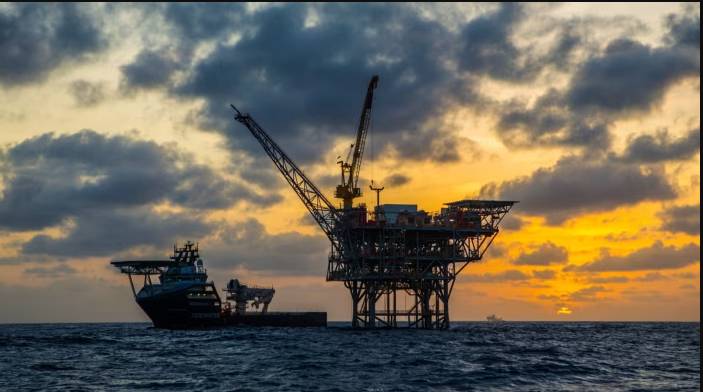
The Bumerangue oil and gas discovery in Brazil's Santos Basin could mark a new era for BP as it leans into fossil fuel production following a strategic pivot away from renewables [Image by News Central TV]
(The Post News)- British petroleum giant BP announced a significant oil and gas discovery at the Bumerangue exploration well in Brazil’s Santos Basin, its largest discovery since the Shah Deniz gas field discovery in Azerbaijan in 1999. The deepwater offshore well indicated a large hydrocarbon column in a good-quality pre-salt carbonate reservoir, preliminary results indicating that a significant new production hub is potentially feasible in the region.
The find is to be welcomed as BP accelerates its comeback to fossil fuels following a series of missteps in its low-carbon ambitions. The Bumerangue well, located about 400 kilometers off Brazil’s southeast coast beneath 2,400 meters of water, is BP’s 10th discovery this year and its second in Brazil alone in 2025. It is a testament to both the geostrategic value of Brazil and the company’s new drive into upstream oil and gas production.
It is a further success in what has been a wonderful year so far,” said BP’s executive vice president for production and operations, Gordon Birrell. “Brazil is an important country for BP, and our hope is to discover the potential to construct a material and advantaged production hub in the nation.”.
Although BP has not yet disclosed reserve estimates for Bumerangue block, analysts say that the find could be a game-changer for the company’s upstream portfolio. “This find would in theory take BP’s upstream business well into the 2030s or 2040s,” wrote Bernstein energy analyst Irene Himona. “The data suggests the scale could be a game-changer.”.
BP stocks rose 1.3% in London trading Monday following the news, outpacing the larger European energy index.
The discovery is a symbolic turning point in the trajectory of BP. Having led as an energy transition pioneer, BP has reversed its green agenda amid investor pressure, rising fossil fuel costs, and a sequence of financial setbacks. These include a $5.7 billion loss during the COVID-19 crisis in 2020 and a $25 billion write-off after it exited Russian oil giant Rosneft in 2022 after the invasion of Ukraine.
BP has shed its US onshore wind farm holdings in recent months and entered into a 50:50 offshore wind joint venture with Japan’s JERA, representing a wiser approach to low-carbon investment. The group also announced this week a new Gulf of Mexico extension development project which will add 20,000 barrels of oil a day.
2024 production was 2.4 million barrels of oil equivalent per day (boe/d), and BP forecasts 2.3 million to 2.5 million boe/d daily production by 2030. 2025 production, however, will be below that figure, as a result of natural decline and asset sales.
BP’s move is made with the backdrop of a new production decision by OPEC+, which said it would raise oil production by 547,000 barrels a day in September, reverting to full pre-pandemic cuts. Even subsequent to the discovery, Brent crude prices dropped 2% to just over $68 a barrel on Monday.
The company has been in the glare of intense investor and activist shareholder pressure. Hedge fund Elliott Management acquired a 5% stake and is pushing for strategic shake-up, including boardroom reform. BP instead appointed a former CRH building materials CEO Albert Manifold to its board as chair-elect to succeed Helge Lund, with Manifold taking over in October.
The company has also suffered internal instability. Its former CEO Bernard Looney was removed following his inability to disclose personal relationships with other employees, creating leadership challenges due to strategic uncertainty.
Early interpretation of the Bumerangue block identifies high carbon dioxide levels, yet BP suggests additional appraisal will determine the full capacity of the reservoir and steer future action in its broader Brazilian drilling campaign.
If affirmed, the find could be the backbone for a behemoth new production hub in South America’s pre-salt basin frontier and bolster BP’s fossil fuel renaissance and redefine its position in the global energy mix.



